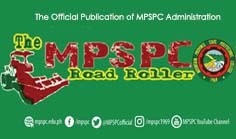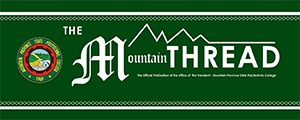ASSESSMENT OF WEAVING INDUSTRY IN MOUNTAIN PROVINCE
Elmer D. Pakipac
ABSTRACT
Ethnic weaving is a skill passed from one generation to another with women doing the task. Two types of ethnic weaving are being practiced in Mountain Province, the traditional backstrap weaving and the loom weaving. Backstrap weavers produce traditional fabric and clothing used for rituals while loom weavers design bags, hats and other souvenir items aside from traditional clothings.
There are 24 weaving industries in the Mountain Province: 13 are registered and 11 are unregistered. Majority of the registered weaving industries are found in Sagada while the unregistered ones are scattered across the ten municipalities of the province. Can-eo and Samoki gets the bulk for the unregistered weavers’ association.
Eighty percent of raw materials are purchased from Baguio or Manila. Weavers use cotton, mercerized thread, vonyl and polyester. Majority of the weavers prefer using polyester as they believe that textiles made out of polyester are more durable with a lesser tendency to shrink.
About 4,000 to 5,000 meters are estimated to be the volume of fabric production per month with a market value ranging from P800,000 to P 100, 000 at 200 to 350 per meter. Polyester thread is purchased in Baguio or Manila at P220 to 300 a kilo. For one loom, 21 to 23 kilos of yarn are used, producing 62 to 64 meters of woven textile with a width of 30 inches. It takes 15 to 30 days to weave the loom depending on the intricacy of design and time devoted by the weaver. Products include fabrics. bags, clothes, wallets, cellphone cases, caps and souvenir items.
Having a pool of weavers who have talent and creativity, a potential market inside and outside the province and the availability of equipment are considered strengths of the weaving industry.
But the weak areas of the weaving industry lie on the lack of understanding on the main objective of ethnic weavers’ association and the inability to meet the demands of clients as most weavers undertake weaving after the planting and harvesting season. Convenient copying of designs is also a threat to local entrepreneurs of the weaving industry.
A major concern, however, is the need for an innovative marketing strategy to fuse traditional and modern designs that are attention-getting as the preference of most clients is on products that appear trendy and unique. Other by products of ethnic woven materials need also to be explored.

















